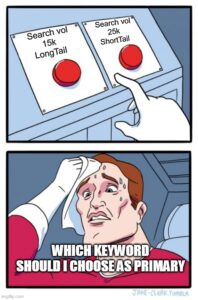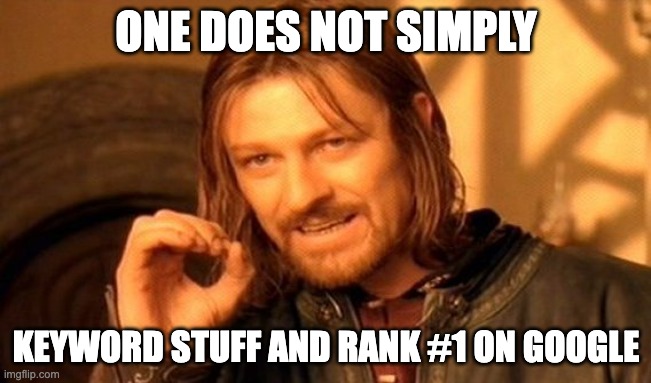In my almost a decade of experience in Digital Marketing, I’ve heard one question from many business owners: ‘How many SEO keywords should I use?”. If we’re talking about your overall SEO strategy, I’d say as many as you need, as long as they’re relevant to your product or service. I also believe it’s important to separate those keywords you should use to optimize your site pages and those you should save for blog articles and other pieces of content.
Keywords remain a cornerstone of SEO strategies, but their role has shifted significantly. In 2025, it’s not about cramming as many keywords as possible into your content; instead, it’s about using them strategically and contextually.
If you’re looking for SEO services in California, PixelPie can help you craft a strategy tailored to your business goals. Effective keyword usage involves understanding user intent, crafting engaging content, and integrating keywords naturally. Add quality, non-AI writing by human experts, and you can’t fail.
How Many SEO Keywords Should I Use?
The answer to ‘how many SEO keywords should I use’ depends on several factors, including the length of your content, the competitiveness of your industry, and your audience’s needs. Here’s a breakdown of what you should consider:
Content-Length

- For short blog posts (500-800 words), targeting 1-3 primary and a few secondary keywords is ideal.
- For long-form content (1,500+ words), you can include 3-5 primary keywords along with related terms and synonyms.
- For service pages, choose one keyword that fits your product or service best. Search volume is a good parameter to follow, but if it also has a lower KD (keyword difficulty), that’s even better.
- Long-tail and other more ‘question’ keywords fit really well with blog posts and other pieces of content for a very good reason: they can provide an answer to that query. Use those keywords in your content and use additional keywords to link to relevant pages.
Keyword Density
- Aim for a keyword density of 1-2%. This means that for every 100 words, your target keyword should appear once or twice.
- Overuse can trigger penalties from search engines, so prioritize natural integration.
Relevance and Intent
- Focus on keywords that match user intent and address their queries comprehensively.
- Use tools like Google Keyword Planner, SEMRush, or Ahrefs to research terms that resonate with your target audience.
The Importance of LSI Keywords
Latent Semantic Indexing (LSI) keywords are words and phrases closely related to your primary keyword. These help search engines understand the context of your content, making it more likely to rank for a variety of searches. For example, if your primary keyword is “SEO services,” LSI keywords could include “search engine optimization” and “digital marketing.” Including these naturally in your content enhances its depth and relevance.
Case Study: A Keyword Success Story
Let’s consider a personal injury law firm in Los Angeles serving the OC and San Diego Counties. By targeting specific keywords like ‘personal injury lawyer in Los Angeles’ for their service pages and using long-tail, query-like keywords like “what can I do if I crash and have no insurance”, they managed to rank on the first page of Google and even show on featured snippets. Their strategy involved:
- Creating blog posts around industry trends and FAQs.
- Using a mix of primary and secondary keywords.
- Using those keywords to interlink blog posts, pages, and other pieces of content.
- Continuously updating old content with fresh data and insights.
Common Mistakes to Avoid
- Keyword Stuffing: Overloading your content with keywords can harm your rankings and alienate readers.
- Ignoring User Experience: Keyword placement should never compromise the readability or flow of your content.
- Neglecting Mobile Optimization: In 2025, mobile-friendly content is a must. Ensure your keywords fit naturally within concise, scannable text.
- Obsessing over quantity and volume: Just because you’re ranking for ‘more’ and ‘higher volume’ keywords doesn’t mean you’re doing a good SEO. Going for keywords that are easier to rank for and actually have to do with your offering can generate more qualified leads.

Integrating Keywords Across Channels
Your keyword strategy shouldn’t be limited to your website. Here’s how to integrate keywords across various digital marketing channels:
- Social Media: Use hashtags and captions that include your target keywords.
- Email Campaigns: Craft subject lines and email content that align with your SEO strategy.
- Paid Ads: Target specific keywords in Google Ads and social media promotions to maximize ROI.
A 2025 Approach to Keyword Analytics
Analyzing your keyword performance is just as important as selecting the right terms. Use analytics tools to track:
- Ranking Changes: Monitor how your keywords perform over time.
- CTR (Click-Through Rate): Higher CTRs indicate that your keywords are resonating with your audience.
- CRO (Conversion Rate Optimization): Track your keyword rankings and check if that content is also generating phone calls, purchases, or any other conversion.
Choose Quality Over Quantity
As you can see, the question of how many SEO keywords should I use doesn’t have a one-size-fits-all answer. The key is to focus on quality over quantity, ensuring that your keywords enhance rather than detract from your content’s value and, more importantly, that it generates qualified traffic. If you don’t have the time or energy to do that yourself, you can hire a boutique digital marketing agency that does. Choose Pixel Pie and get quality content that both Google and your visitors love. Schedule a 30-minute video meeting and switch to a winner strategy that actually converts.